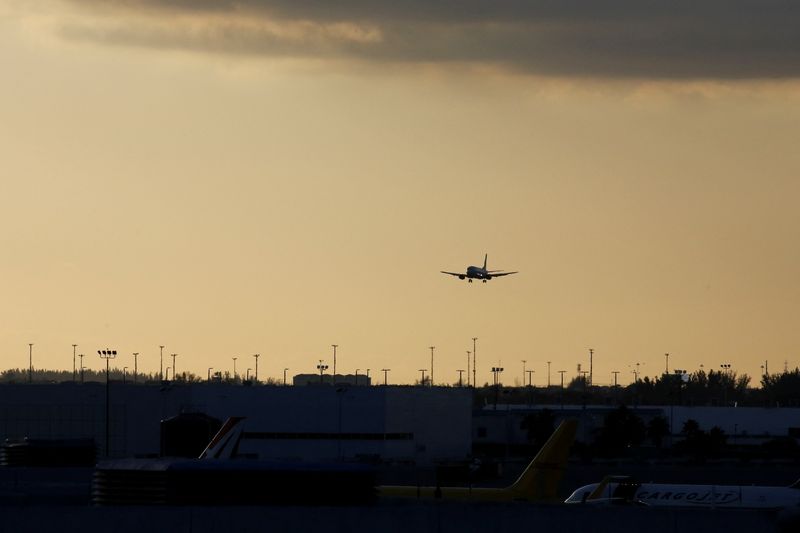By Sourasis Bose
(Reuters) - The United States' goal of rapidly ramping up production of sustainable aviation fuel (SAF) may encounter strong headwinds as producers balk at the low margins for the biofuel and some airlines flag concerns over the costly switch, experts said.
President Joe Biden, who has made tackling climate change a central pillar of his administration, launched a challenge in 2021 to supply at least 3 billion gallons of SAF annually by 2030, a steep jump from the current 15.8 million gallons as per U.S. government data.
U.S. production of SAF will be 2.1 billion gallons by 2030, S&P Global Commodity Insights has estimated, based on upcoming projects.
"A lot of additional investment (is) needed to hit that (3 billion) target," said Wood Mackenzie analyst Gordon McManus.
A lot is riding on SAF as the U.S. Energy Department has said alternative sources, such as battery technologies and hydrogen, are not expected to contribute to substantially reducing aviation emissions until after 2050.
Corey Lavinsky of S&P Global Commodity Insights said the goals were for domestic production and not consumption.
"As things stand now, an airline may choose not to use SAF because it believes it's too expensive compared to traditional jet fuel. Mandating the use of SAF would eliminate that option," Lavinsky said.
U.S. jet fuel currently retails at around $2.85 per gallon while SAF prices are at $6.69 per gallon, as per data from commodities and energy pricing agency Argus Media.
Major airlines including Delta Air Lines (NYSE:DAL) and Southwest Airlines (NYSE:LUV) have said they want to replace 10% of jet fuel with SAF by 2030. But, SAF currently makes up only 0.1% of the total U.S. jet fuel pool.
Rising costs and supply issues are among the biggest hurdles and the industry needs more support to reach the goal of net zero emissions by 2050, a survey commissioned by GE Aerospace ahead of the Paris Airshow in June suggested.
European regulators introduced a mandate to ensure SAF constitutes 2% of fuel available at EU airports by 2025, rising to 6% in 2030, 20% in 2035 and gradually to 70% in 2050.
"It does not need to be a mandate copied from the European system, but you need both strong policy to enable that," said Oskar Meijerink from Dutch firm SkyNRG, which is building a SAF plant in the U.S.
SAF producers are currently eligible for a tax credit of up to $1.75 per gallon under the Inflation Reduction Act (IRA), but this might not be enough to offset poor margins, analysts said.
"At the moment, it's maybe a hard decision for producers to put additional capital in to produce SAF rather than renewable diesel," said McManus. Renewable diesel can be made from the same feedstocks as SAF.

Project costs for SAF also remain high as additional processing is required for the biofuel and supply of feedstocks such as cooking oil are tight.
Meanwhile, the Biden administration is divided over ethanol's role in the aviation fuel subsidy program, and likely will delay until December a decision on whether to make it easier for SAF made from corn-based ethanol to qualify for IRA subsidies.